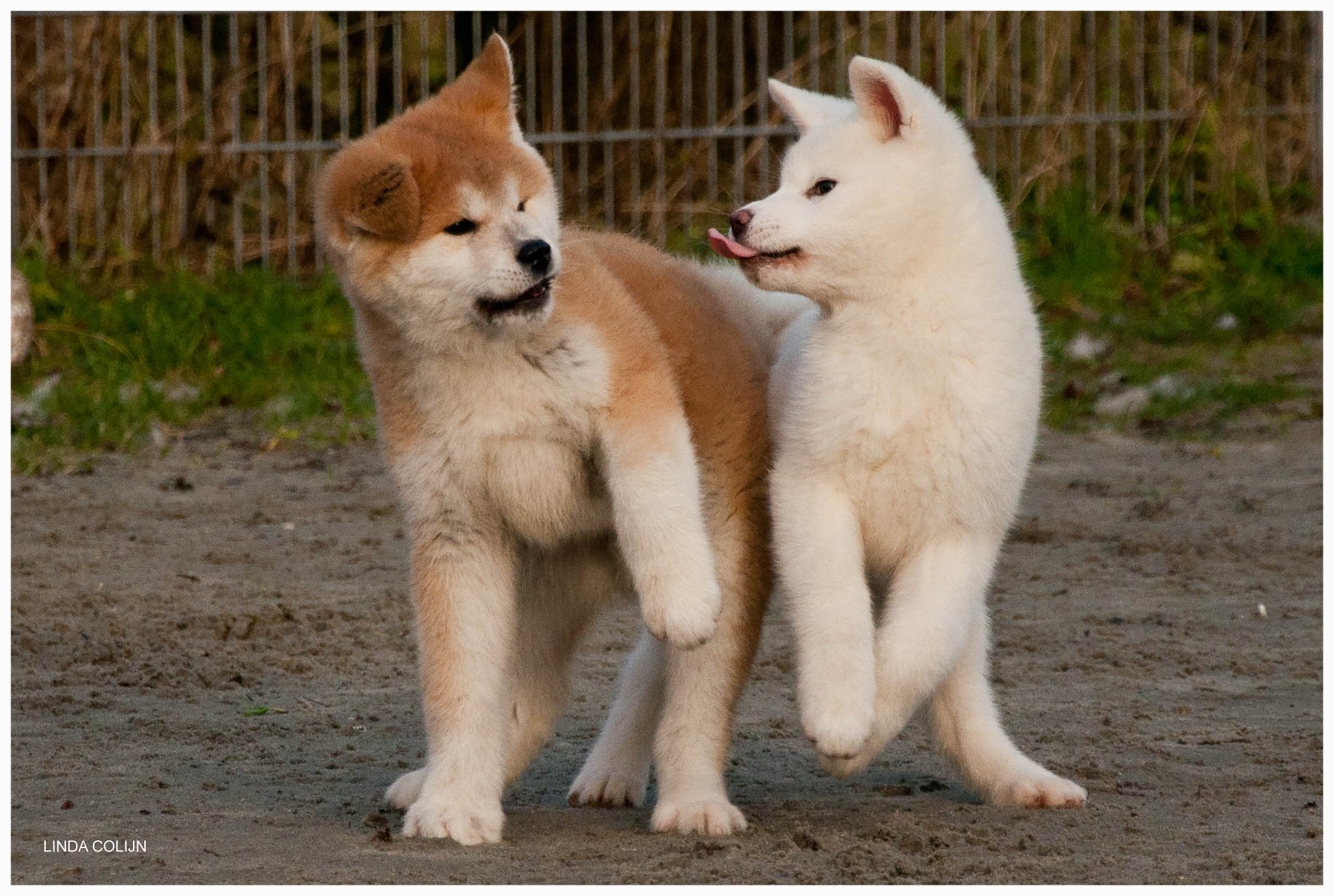
The Breed History
First written records date to the 17th century, where in the Akita
Prefecture of Honshu in Northern Japan (Dewa), breeding programs
were instituted to produce a sensible hunting dog. At this time,
ownership of Akita dogs was restricted to the aristocracy. Their
esteem was held so high that in some places they were assigned
individually hired caregivers who provided special care. This ancient
Japanese dog breed is also cemented in certain spiritual traditions
wherein the dog represents good health, and a statue gift of the
dog for a new addition to a family represents wishes for health,
happiness and a long life for the child. This statue gift is also sent
as a get-well message for those ailing. They are of Spitz type, and
the ancient progenitor genes came into Japan with migrating
Siberian nomads a very long time ago.
Akitas may also include in their heritage crosses of Chow-Chows
with Tosa (Shikoku) and Kari dogs. In spite of the special status
of this breed, at times, the popularity fell off to the point of near
extinction. In 1931, Japan named the breed a national monument.
Helen Keller was credited with importing the first specimens of the
breed to America. The AKC first registered Akitas in 1972.
Breeding for Function
Their original use was for hunting in rugged territory. Boar and deer
were typical game. Alert and possessing good stamina, these dogs
were valued hunting companions. They were also reported to have
been soft mouthed enough for waterfowl retrieval. Others report
their use as pit fighting dogs. They were adapted to a harsh wintry
environment, and were renowned for their sturdy, agile, silent work.
Physical Characteristics
Height at Withers: female 24-26" (61-71 cm), male 26-28" (66-71 cm).
Weight: females 75-85lb (34-38.5 kg), males 85-110 lb (38.5-50 kg).
Coat: They have a thick double coat with medium length outer coat
hair, and are accepted in many colors including brindle, pinto, or
white. The undercoat may be a different color. The outer coat stands
up and is harsh and straight while the undercoat is soft, dense and
short. Some lines have longer hair than the average, though this
variation is not considered correct for show.
Longevity: 11-12 years
Points of Conformation: The full tail held over the back and the
alert, pricked ears and bear-like facial expression on the large
head characterize this stocky dog. The skull is broad, with broad
muzzle and small dark brown eyes, deep set and a triangular shape.
A shallow furrow runs in a line up the head extending onto the
forehead. Triangular ears are small. Set wide, they are strongly
leathered to keep them firmly up. The nose is large and black
pigmentation is preferred. The stop is well defined, and both lip and
palpebral margins are black. The crested neck is short. The thorax
is wide and deep, and ribs are well sprung. The topline is level and
the abdomen moderately tucked up. The high set tail is carried
over the back curled, and reaches the tarsus. They possess heavily
boned and muscled straight limbs, and dewclaws are not generally
removed from the forelimbs but from the hind limbs they are. Feet
are small, compact and have well knuckled up toes. They move with
a moderate stride.
Recognized Behavior Issues and Traits
Traits ascribed to this breed include: Adaptability and intelligence,
requires close human companionship, friendly, loyal and docile.
They are also described as intelligent, possessing high perseverance;
an alert and a faithful companion. Will tend to show aggression
towards other dogs so they are best kept solo unless socialized from
puppyhood, and even then they may still assert themselves. Needs
an experienced owner to perform successful obedience training due
to their strong personalities. Dignified carriage, active, independent,
aloof with strangers but tend to bark only when a threat is real.
Akitas have a strong guarding instinct, and will capably defend
home and family. Need plenty of mental stimulation to prevent
boredom vices. They have a high shedding tendency. Should be
supervised with children and pets, as they can attack members of
their own family.
Normal Physiologic Variations
Akitas have a benign autosomal recessive inherited condition
of high red blood cell potassium. A survey in Japan showed
one-quarter to one-third of Akitas affected.
Drug Sensitivities
None reported
Inherited Diseases
Hip Dysplasia: Polygenically inherited trait causing degenerative
joint disease and hip arthritis. OFA reports 13.0% affected.
Patella Luxation: Polygenically inherited laxity of patellar
ligaments, causing luxation, lameness, and later degenerative joint
disease. Treat surgically if causing clinical signs. OFA reports 1.5%
affected. Dorn reports a 2.38x odds ratio for developing patella
luxation versus other breeds. Another study reports a 6.7x odds
ratio versus other breeds.
Elbow Dysplasia: Polygenically inherited trait causing elbow
arthritis. OFA reports 1.3% affected.
Disease Predispositions
Hypothyroidism: Inherited autoimmune thyroiditis. 8.6% positive
for thyroid auto-antibodies based on testing at Michigan State
University. (Ave. for all breeds is 7.5%). Reported at a frequency of
18.6% in the 2001 ACA Health Survey.
Gastric Dilation/Volvulus (GDV, Bloat): Life-threatening twisting
of the stomach within the abdomen. Requires immediate veterinary
attention. Glickman found a 1 in 5 lifetime risk of developing GDV
in Akitas. Reported at a frequency of 12.2% in the 2001 ACA Health
Survey.
Allergic Dermatitis: Inhalant or food allergy. Presents with pruritis
and pyotraumatic dermatitis (hot spots). Reported at a frequency of
10.1% in the 2001 ACA Health Survey.
Cranial Cruciate Ligament Rupture (ACL): Traumatic tearing of
the anterior cruciate ligament. The breed is found to be one with an
increased incidence. Reported at a frequency of 6.6% in the 2001
ACA Health Survey. Treatment is surgery.
Sebaceous Adenitis: Disorder of immune mediated sebaceous
gland destruction, presenting with hair loss, hyperkeratosis and
seborrhoea, usually beginning with the dorsal midline and ears.
Diagnosis by skin biopsy. Treat with isotretinoin. An autosomal
recessive mode of inheritance is suspected. Reported at a frequency
of 3.4% in Sweden.
Persistent Pupillary Membranes: Strands of fetal remnant
connecting; iris to iris, cornea, lens, or involving sheets of tissue.
The later three forms can impair vision, and dogs affected with
these forms should not be bred. Identified in 2.91% of Akitas CERF
examined by veterinary ophthalmologists between 2000-2005.
Retinal Dysplasia: Retinal folds, geographic, and generalized retinal
dysplasia with detachment are recognized in the breed. Reported
in 1.95% of Akitas CERF examined by veterinary ophthalmologists
between 2000-2005.
Uveodermatologic (VKH-like) Syndrome: An autoimmune disease
manifested by progressive uveitis and depigmenting dermatitis that
closely resembles the human Vogt-Koyanagi-Harada syndrome.
Onset 1-1/2 to 4 years of age. Treat with immunosuppressive drugs.
One study showed that Akitas with the histocompatability DLA gene
DQA1*00201 had a 15.99x odds ratio for developing the syndrome.
CERF does not recommend breeding any affected dogs.
Pemphigus Foliaceus: An increased risk of developing immune
mediated pemphigus foliaceus was noted in the Akita (Odds ratio
= 37.8x). Typical lesions include dorsal muzzle and head symmetric
scaling, crusting, and alopecia with peripheral collarettes,
characteristic footpad lesions, with erythematous swelling at the
pad margins, cracking, and villous hypertrophy. Average age of
onset is 4.2 years. Treatment with corticosteroid and cytotoxic
medications. One-year survival rate of 53%. Unknown mode of
inheritance.
Acquired Myasthenia Gravis: Akitas are a breed at increased risk
of developing generalized or focal acquired myasthenia gravis. The
most common presenting signs were generalized weakness, with or
without megaesophagus. Diagnosis is by identifying acetylcholine
receptor antibodies.
Juvenile-onset Polyarthritis: Inherited syndrome of cyclic febrile
illness and signs of profound joint-related pain. Can also cause
concurrent aseptic meningitis. Treatment with immunosuppressive
drugs. Unknown mode of inheritance.
Primary (Narrow Angle) Glaucoma: Ocular condition causing
increased pressure within the eyeball, and secondary blindness due
to damage to the retina. Diagnose with tonometry and gonioscopy.
Diagnosed in 1.39% of Akitas presented to veterinary teaching
hospitals.
Entropion: Rolling in of eyelids, often causing corneal irritation or
ulceration. Entropion is reported in 0.99% of Akitas CERF examined
by veterinary ophthalmologists between 2000-2005.
Cataracts: Anterior and posterior cortex punctate cataracts
predominate, though posterior nuclear and capsular cataracts also
occur in the breed. Identified in 0.85% of Akitas CERF examined by
veterinary ophthalmologists between 2000-2005. CERF does not
recommend breeding any Akitas with a cataract.
Progressive Retinal Atrophy (PRA): Inherited degeneration of the
retina. Onset 1.5 to 3 years of age, initially with night blindness that
progresses to day blindness. Form of PRA, and mode of inheritance
is not determined in this breed. Reported at a frequency of 0.5% in
the 2001 ACA Health Survey. CERF does not recommend breeding
any affected Akitas.
Brachygnathism, Central PRA, Deafness, Epilepsy, Glycogen
Storage Disease III, IgA deficiency, Osteochondritis Dissicans
(shoulder and stifle), Osteochondrodyplasia, Peripheral
Vestibular Disease, Portosystemic Shunt, Prognathism, Renal
Dysplasia, and von Willebrand's Disease are reported.
Isolated Case Studies
Epidermolysis Bullosa: A 4-year-old female Akita had a
3-year-history of ulcers and scars over the pressure areas on
the limbs, and dystrophic nails. The immune mediated disease
epidermolysis bullosa was diagnosed based on biopsy, electron
microscopy, and special staining.
Multiple Congenital Ocular Defects: Microphthalmia, congenital
cataracts, posterior lenticonus, and retinal dysplasia were observed
in 6 puppies from 3 litters of Akitas thought to be related to a
common male ancestor.
Tracheobronchial Amyloidosis: An 11 year old intact male Akita
dog with a chronic non-productive cough was diagnosed with
primary diffuse tracheobronchial amyloidosis at necropsy.
Cervical Spinal Arachnoid Cyst: An 18-month-old, intact male
Akita presented with a 12-month history of progressive ataxia,
hypermetria, and loss of conscious proprioception of all 4 limbs was
diagnosed by myelography with an arachnoid cyst between the first
two cervical vertebra. Surgery was curative.
Genetic Tests
Tests of Genotype: Direct tests for color and mask alleles are
available from VetGen.
Tests of Phenotype: CHIC Certification: Required testing includes
hip radiographs, CERF eye examination (annually until year 6, then
every other year), and thyroid profile including autoantibodies.
Recommended tests include elbow radiographs, and patella
evaluation. (See CHIC website; caninehealthinfo.org).
Recommend cardiac evaluation.
Miscellaneous
- Breed name synonyms: Akita Inu, Shishi Inu, Japanese Akita,
Matagiinu (historical name for the breed in Japanese meaning
esteemed dog hunter).
- Registries: AKC, UKC, CKC, KCGB (Kennel Club of Great Britain),
ANKC (Australian National Kennel Club), NKC (National Kennel Club).
- AKC rank (year 2008): 52 (3,157 dogs registered)
- Internet resources: Akita Club of America: akitaclub.org
Japanese Akita Club of America: the-jaca.org
Akita Club of Canada: akitaclub.ca
Japanese Akita-Inu Club (UK): japaneseakita-inu.co.uk
Photo Gallery of Breed - Akita - Dog Breed
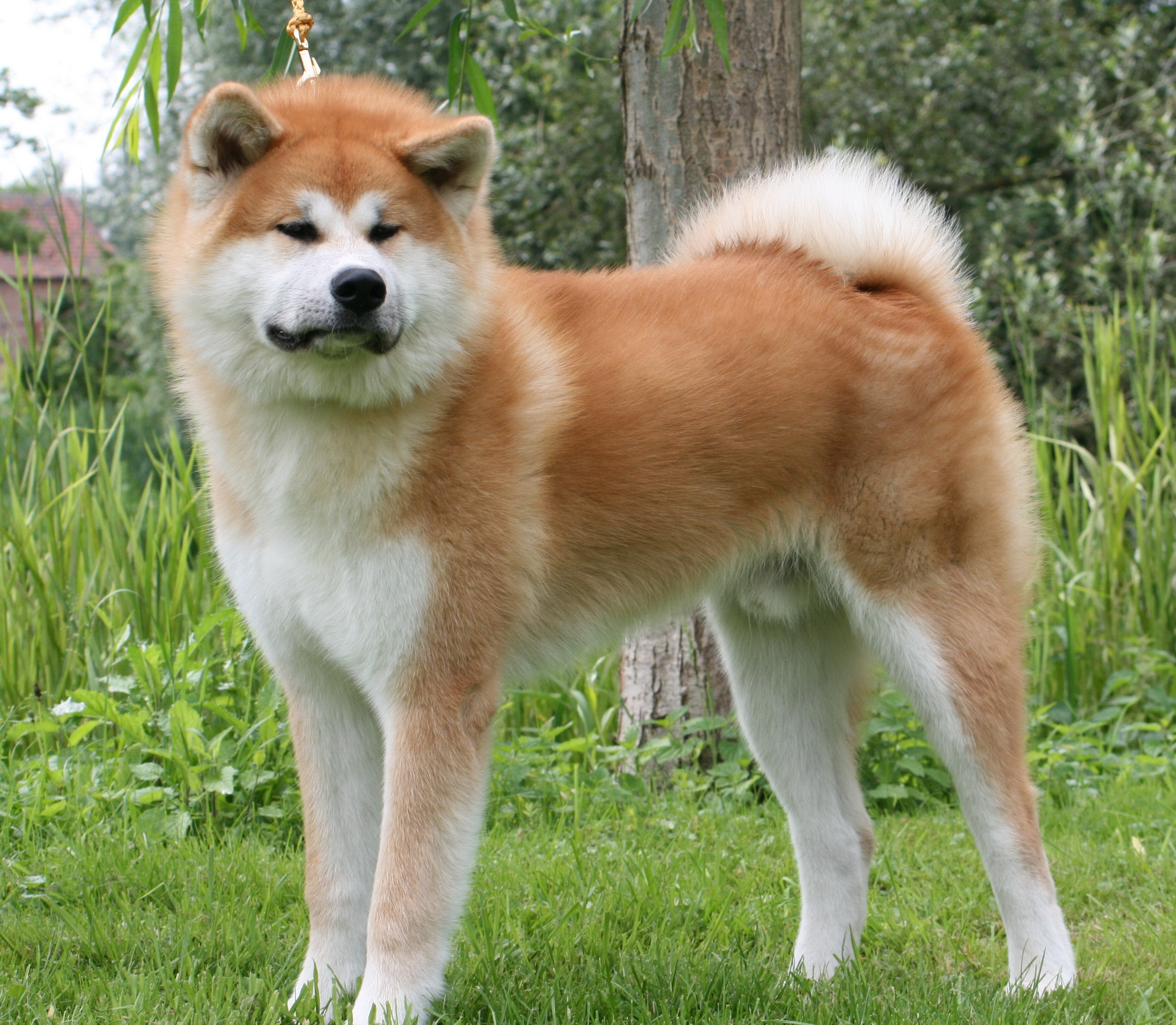
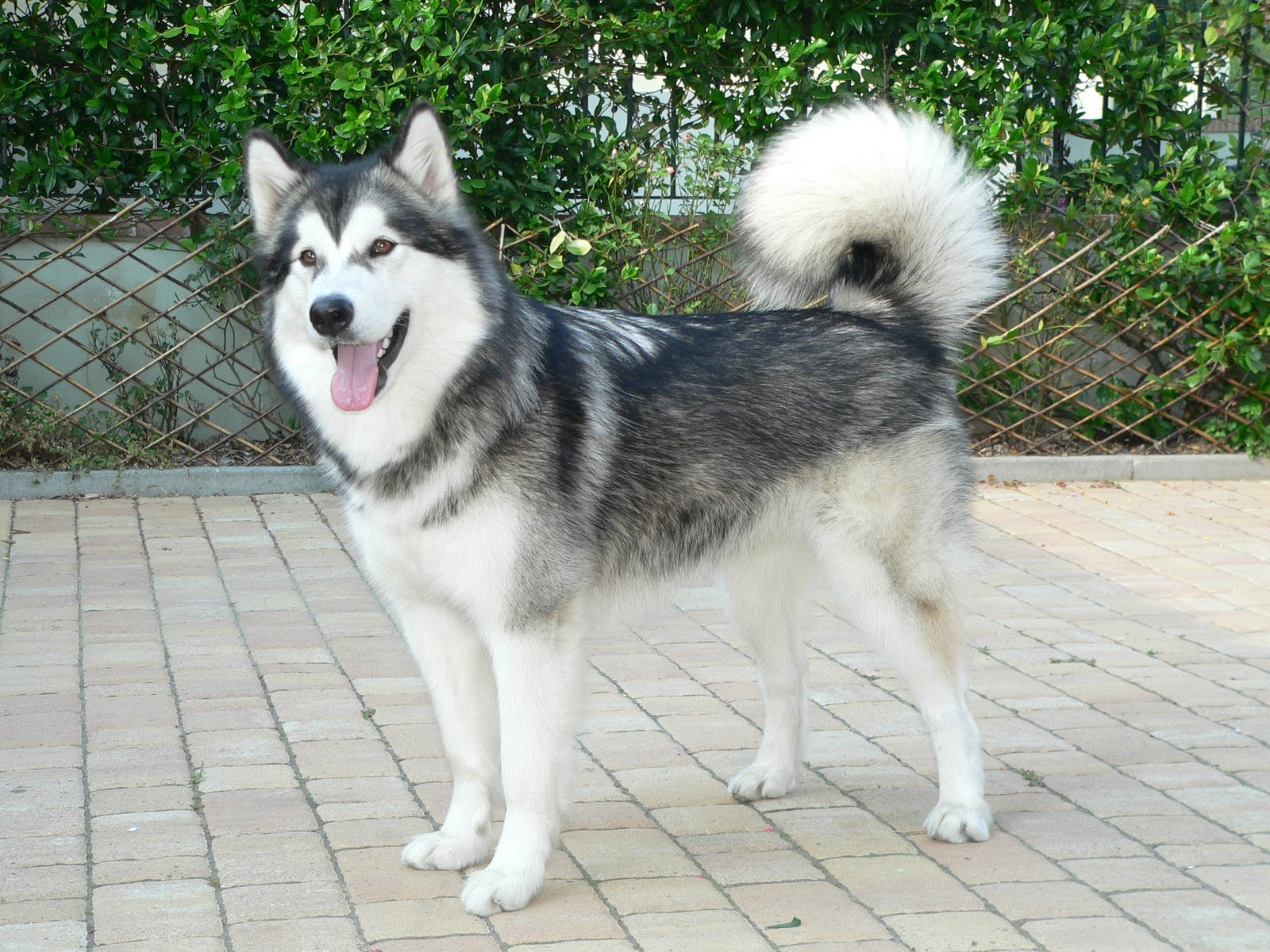
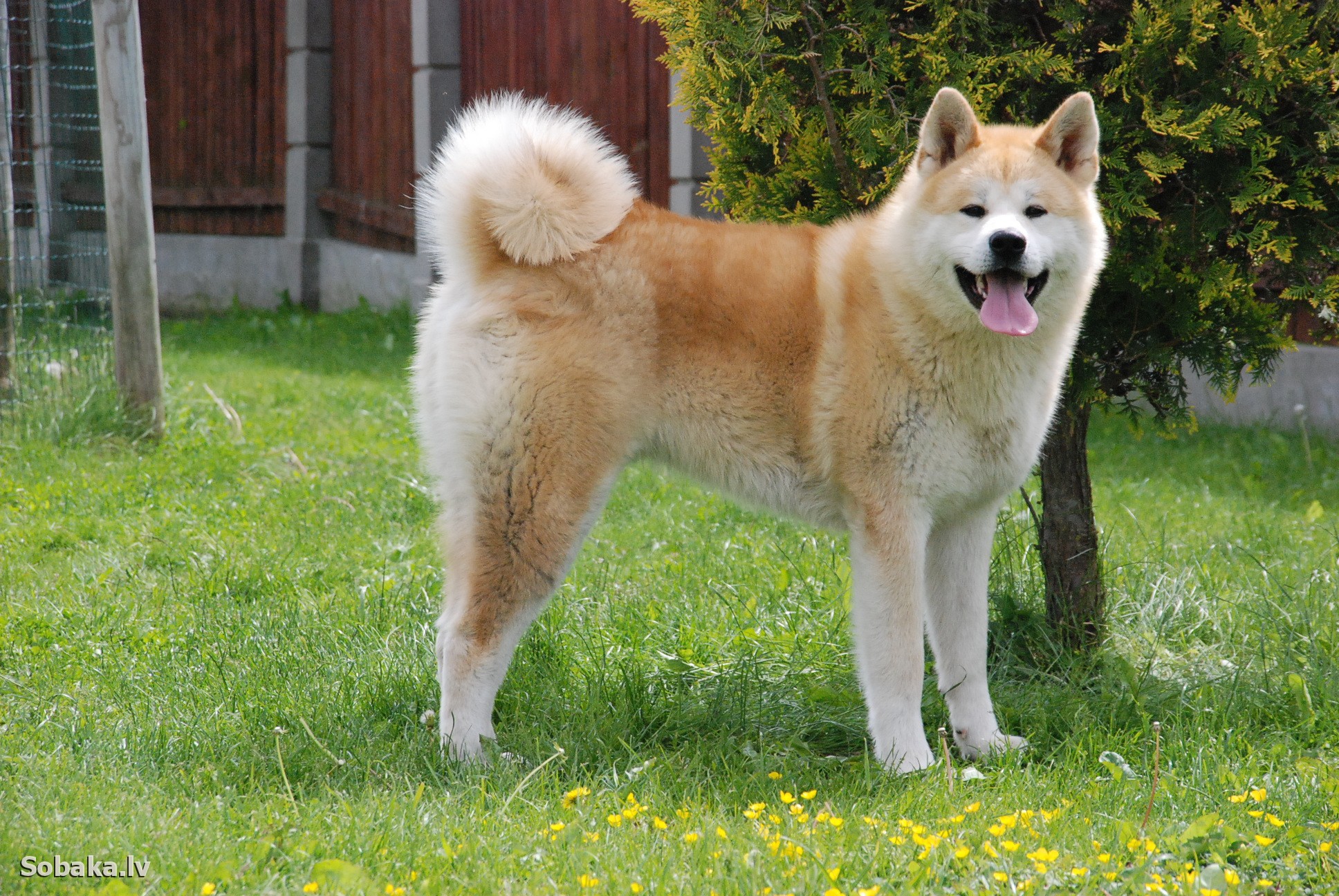

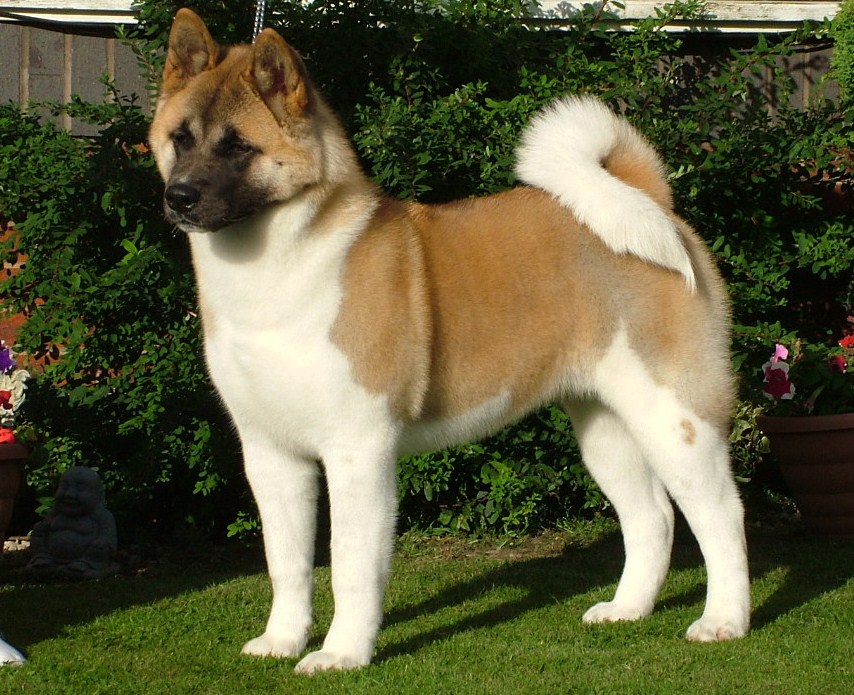



 Animalia Life
Animalia Life